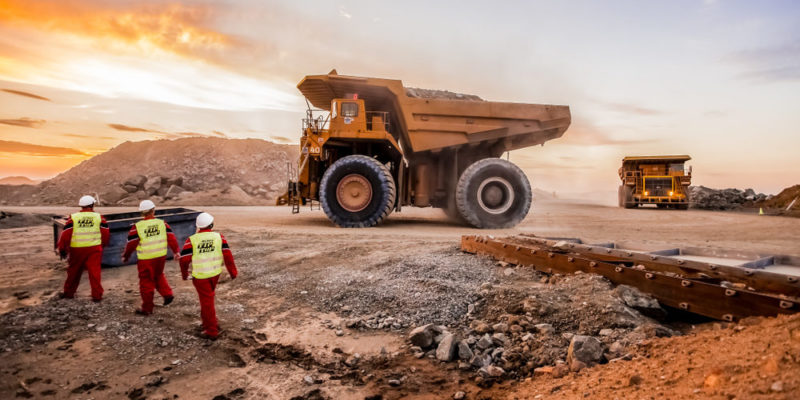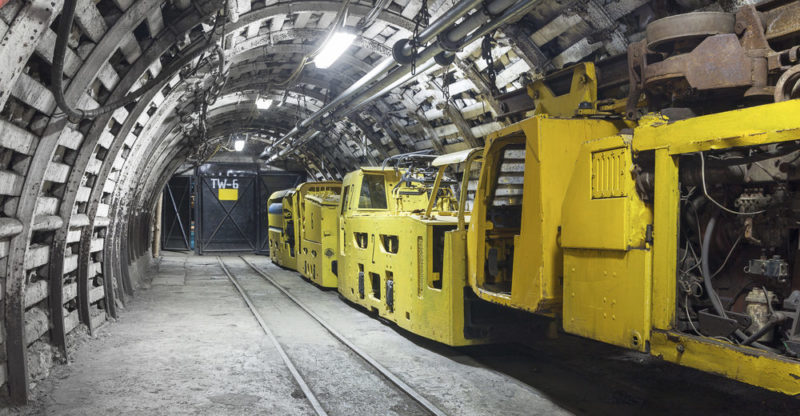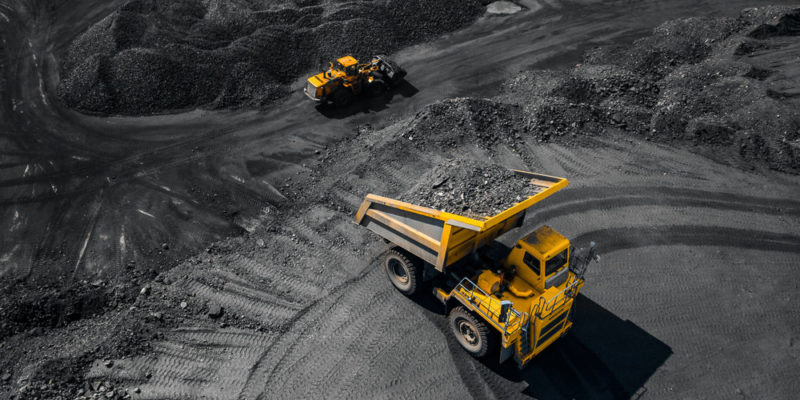We explain what mining is, the types of extraction it uses and its stages. Also, what are its general characteristics and classification.
What is mining?
Mining or mining activity is an economic activity, belonging to the primary sector , which consists of the extraction of minerals and marketable elements from the interior of the earth’s crust. These materials are found forming deposits or deposits of thousands of years of geological antiquity.
Mining is one of the main economic activities in many countries in the world . It is a vital source of resources for most human industries , which serves as raw material in the production of the most diverse objects and machinery.
There are various forms of mining depending on the place, the element to be mined and the conditions in which it is desired to extract it. Some of them have serious environmental consequences . The site where the elements are extracted is known as a mine, and those who are dedicated to this activity as miners.
How did mining originate?
The use and modification of minerals and stones taken from the earth is one of the oldest human activities .
Our first tools were obtained in this way.
In the Neolithic period , different civilizations already exploited various minerals such as flint or green shale.
These materials were used to make tools , ceremonial ornaments or even to embellish objects or buildings.
The oldest known mine in the world is located in Swaziland, Africa . It has been dated to 43,000 years old. From there paleolithic humans obtained the hematite with which they produced ocher pigments.
History of mining

The first massive mining operations in history belonged to the Egyptian Empire . They obtained minerals such as malachite, turquoise and copper from quarries located in Maadi, Lower Egypt, or Wadi Maghara, south of Sinai.
There is also mention in ancient Greek historians of their great gold mines in Nubia. With this metal they made ritual and veneration objects.
In the Greco-Latin period, mining spread and became widespread in Europe , especially for obtaining silver , gold, copper, iron and marble. This activity grew through slave labor.
Hydraulic mining was already used at that time , that is, water was used to transport materials and remove rock waste. From many of these minerals the necessary metals would be extracted to forge weapons of war, in an endless demand that was sustained throughout the European Middle Ages .
On the other hand, in America the aboriginal cultures used minerals and precious stones to adorn their temples or as material for offerings. European settlers who arrived in the fifteenth century began a frenetic mining activity that in many cases is still supported today by the new independent states .
Finally, with the arrival of the Industrial Revolution and the energy needs of the modern world, mining rebounded as one of the most lucrative economic activities in the world , along with oil exploitation. The energy power of coal and hydrocarbons is coveted throughout the world.
Extraction Types

Mining can take place on land or in the sea (that is, on the sea floor), and through two different extraction procedures, mainly:
- Opencast mining. Also called surface mining, it consists of the removal of the upper layers of rock, together with the vegetation of the area, to expose the buried mineral deposits. The result is a large crack in the ground ( Open Pit Mining ), an opening over a specific deposit (quarrying) or the radical modification of the topography of the area ( Mountaintop mining ) through the disappearance of mountains .
- Underground mining. Also called subsoil mining, it consists of penetrating the rock towards the subsoil and creating galleries and tunnels that lead to the deposits. It can consist of horizontal accesses ( drift mining ), diagonal accesses ( slope mining ) or vertical accesses ( shaft mining ). These types of mines have the disadvantage that they can collapse and bury the miners inside.
Exploitation stages
Mining involves the following stages:
- Prospecting. The search for deposits through geological maps, aerial photography , satellite images and various exploratory techniques. When a suitable mineral body is discovered, its size, quantity and quality are determined.
- Exploration. Depending on the deposit, various exploitation methods can be implemented, taking into account the topography, the ease of extraction, etc. Once the technical terms have been defined, drilling is carried out until reaching the deposit and then mechanically breaking the ore vein to extract pieces of it.
- Separation . These mineral chunks are screened, classified, washed and then crushed to separate them from rock debris, using various mechanisms: magnetic, gravitational or simply by manual selection.
- Treatment. Depending on the nature of the desired ore, its already separated fragments can then be treated to prepare them for their journey to the destination, either by calcination, solution and precipitation techniques, leaching, etc.
- Transport. The mined and treated ore is taken to its sites for industrial consumption or direct marketing.
Main minerals mined

The most frequently mined minerals can be classified according to their usefulness for humans in:
- Metal mining. Seams of metallic elements (pure or not) of iron and steel value, such as copper, gold, silver, aluminium , lead , mercury , iron, etc., are extracted.
- Non-metallic mining. Useful materials for construction, jewelry and other uses, of a non-metallic nature, such as clay, marble, granite, emeralds, diamonds, mica, etc., are extracted.
- Energy mining. Hydrocarbons and minerals of high energy value , such as mineral coal, natural gas or oil , are extracted .
Classification of mining according to its scale
Mining activity is classified, based on its scale, into three lines:
- Large mining or mega mining. It is carried out by large transnational mining companies, with enormous capital and infrastructure, state-of-the-art technology , smelting and transportation mechanisms. They generate colossal volumes of minerals, usually for export.
- Medium mining. Included here are various ranges of national mining industries that supply the domestic market of a country, varying according to capital, labor, resource availability, etc.
- Small mining. That which is carried out in local terms, with small deposits and rapid extraction operations. They require less infrastructure and offer higher employment ratios in the population .
Industrial importance of mining

Mining is essential in the contemporary world, since the raw material with which numerous industries are fed is extracted from the subsoil . Among them, the chemical, steel, manufacturing and technological industries stand out.
This means that, on the one hand, mining as an industry employs an enormous amount of labor in the mines and in transportation . But on the other hand it is the starting point of a long chain of employment and financial flow in the world. It is also the source of the most diverse elements that exist, whether for industrial, war or energy purposes.
Oil exploitation

A mining activity that, however, deserves a separate treatment is oil and gas. These materials, crude oil and natural gas, have been formed underground over thousands of years of anaerobic decomposition of organic matter.
The interest in these substances is that they have a gigantic energy potential, superior to that of mineral coal . In addition, in the case of oil, the petrochemical industry can derive from it various compounds useful to man, such as nylon, plastic , paraffins, oils, gasoline, and a long etcetera.
Ecological consequences

Mining is not, in any way, a sustainable or ecological economic activity. In the first place, because the extracted materials are not renewable , that is, one day they must end or run out.
Second, it is dangerous for the environment because the extraction mechanism is necessarily invasive of the earth’s crust . It generates great modifications of the land and the topography, which have consequences in the relief , obstructing rivers and altering the layers of the land.
And finally, because during the extraction, potentially polluting elements are used that, to some extent, end up in the wastewater, contaminating entire ecosystems. Mining always represents an enormous risk for the biotic balance of nearby communities .
Major mining countries
The world’s leading mineral exporters are, in order of importance: China, Australia, The United States, Russia, South Africa, Peru , Indonesia, Canada, and Brazil.
The above content published at Collaborative Research Group is for informational and educational purposes only and has been developed by referring reliable sources and recommendations from experts. We do not have any contact with official entities nor do we intend to replace the information that they emit.














